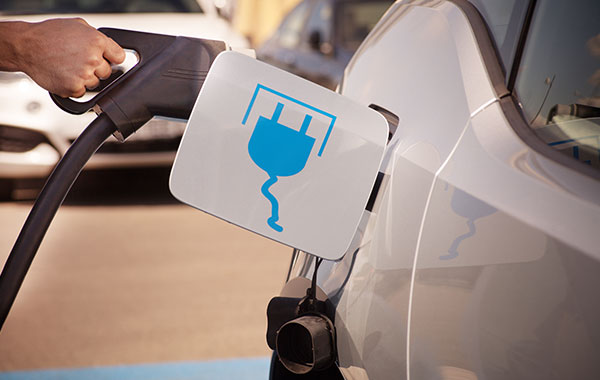Almost 400,000 new e-cars registered in 2020

In Germany, 82,800 electric vehicles were newly registered in December. The increase compared to the same month last year is 629 percent. Over the entire past year, e-vehicle registrations increased by 263 percent to 394,939 units. These include purely battery-powered electric cars, plug-in hybrids and fuel cell vehicles. They reached a 14 percent share of the total market in 2020, up from around 3 percent in 2019.
New registrations of all-battery electric vehicles (BEVs) increased nearly eightfold (up 660 percent) to 43,671 units in December. In addition, 39,107 plug-in hybrids were registered (up 601 percent), according to the Federal Motor Transport Authority.
For the year as a whole, 194,163 purely battery-powered electric cars were newly registered (up 207 percent), 200,468 plug-in hybrids (up 342 percent) and 308 fuel cell vehicles (up 48 percent).
Reinhard Zirpel, President of the Association of International Motor Vehicle Manufacturers (VDIK) emphasized: “Despite the Corona crisis, the alternative drive systems achieved a breakthrough in 2020. Almost 400,000 new electric vehicles were registered, nearly four times as many as in 2019. This boom will continue in 2021. This year, up to 600,000 battery electric cars and plug-in hybrids could be newly registered in Germany.”
The VDIK regularly updates the list of electric vehicles from international manufacturers. The VDIK member companies currently offer more than 80 electric models that customers can order in Germany. The VDIK electric list can be accessed here.
The demand for vehicles with alternative drives as a whole also increased significantly in December. There were 126,520 new electric cars, hybrids with and without plugs, mild hybrids (48 volts) and gas-powered passenger cars registered. The year-over-year increase was 319 percent. For the year as a whole, 736,035 new units were registered. This included 7,159 new CNG cars, more than three-quarters of which came from international manufacturers (77 percent). Overall, cars with alternative powertrains more than doubled their share of the total market to 25 percent in the past twelve months, up from just under 9 percent in 2019.
| December | January – December | |||||
|---|---|---|---|---|---|---|
| Change (%) | Change (%) | Share of total market | Int. manufacturers (VDIK, %) | |||
| BEV | 43,671 | 660 | 194,163 | 207 | – | 40 |
| PHEV | 39,107 | 601 | 200,468 | 342 | – | 26 |
| FCEV | 22 | -31 | 308 | 48 | – | 100 |
| Electric vehicles (total) | 82,800 | 629 | 394,939 | 262 | 14.0 | 33 |
| HEV | 42,001 | 133 | 327,394 | 69 | – | 45 |
| CNG | 315 | -57 | 7,159 | -6 | – | 77 |
| LPG | 1,404 | 1,347 | 6,543 | -10 | – | 98 |
| Alternative drivetrains (total) | 126,520 | 319 | 736,035 | 132 | 25.0 | 39 |
Glossary
Electric vehicles: BEV, PHEV and FCEV
BEV, Battery Electric Vehicle
PHEV, Plug-In Hybrid Electric Vehicle
FCEV, Fuel Cell Vehicle, hydrogen vehicle
HEV, Hybrid without plug or non-rechargeable
CNG, Compressed Natural Gas
LPG, Liquified Petroleum Gas